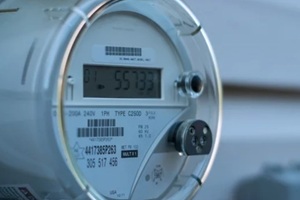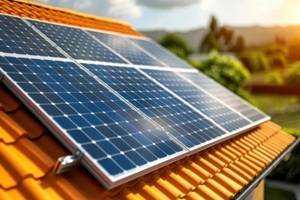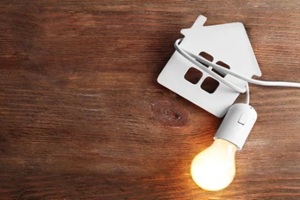Energy bills can be an unpredictable monthly expense due to seasonal weather changes, peak usage charges, and new charges from utility providers. Yet, many homeowners don’t realize that the home’s size and age can influence its energy consumption and spike monthly electricity bills without any major changes or renovations to the home.
Square footage, material choices, construction era, and system efficiency can all impact energy bills. Recognizing these factors can help homeowners respond to high energy bills with strategic upgrades and better energy habits. This is especially valuable when moving to a new home, evaluating the benefits of solar energy, planning energy-efficient home upgrades, and more.
This article reviews the ways in which a home’s size and age influence its monthly electricity bills to help homeowners adopt more energy-efficient strategies.
1. More Square Footage Means More Energy Demand

Larger homes consume more energy in many ways. Since bigger homes have a larger air volume, the HVAC has to run longer to maintain the same temperature. The heating and cooling load factor significantly indicates the home’s energy efficiency.
Additionally, more lighting is needed to maintain visibility and comfort. More appliances and devices may be running at once. The demand is even higher in two-story homes due to different air flow patterns.
In a larger house with many windows, single-pane glass causes energy drain, forcing the HVAC to work harder. Since the home can’t usually be downsized, other methods are needed to make temperature regulation easier in larger houses, such as energy-efficient double-paned or tinted windows.
2. Older Homes Create Energy Leaks
Owning an older home offers architectural quality and character, but many hidden aspects of old homes drain their power resources. For example,
- Outdated insulation can lead to poor temperature regulation
- Poorly sealed attics and ducts allow heat and air to escape
- Single-pane windows allow heat to get in and out
- Oversized, often inefficient HVAC systems fail to compensate
- Heating through electric resistance is not as efficient as modern heat pumps
Modern energy codes began in the 1980s. Homes built before that were not often built with modern energy efficiency benchmarks in mind, leading many homeowners to pay significantly more for their monthly electricity bills, even compared to a modern house of similar size.
3. Building Codes and Construction Regulations
Modern homes, especially newer than 2010, must meet strict building codes and energy-related construction requirements. These include minimum insulation values, energy-efficient window glazing, tighter ductwork and envelope sealing, and more efficient HVACs and water heaters.

Additionally, many older homes are not ready for solar installations and other energy-efficiency upgrades such as smart thermostats and lighting timers. These upgrades can reduce energy usage in the house, but many older homes require retrofitting to take advantage of them.
4. Old Appliances and Fixtures Present Problems
Older homes, especially pre-1980, are often equipped with energy-inefficient appliances and fixtures. These systems add up for homeowners trying to reduce their monthly electricity bills. They can include:
- Outdated water heaters or furnaces
- Old, inefficient kitchen appliances
- Thermostats with no automatic shutoff
- Incandescent bulbs
In many new homes, the situation is the opposite. The appliances often have an Energy Star rating, the lighting is often LED, thermostats are equipped with smart on and off features, and the roofs are ready for solar panel installations.
These features lead to greater energy adaptability, allowing homeowners to view how their energy-saving strategies impact their bills in real time. By contrast, outdated and inefficient systems with higher base energy loads are more expensive and difficult to change.
How to Upgrade the Energy Efficiency of Old or Large Homes
Homeowners living in older or oversized homes can use these strategic upgrades to create substantial energy savings:
- Replacing single-pane windows with energy-efficient alternatives or adding storm windows
- Installing smart thermostats set to more efficient energy usage patterns
- Upgrading appliances, including the HVAC, to more energy-efficient models
- Enhancing air sealing and insulation to reduce energy loss
- Installing solar panels to offset high energy usage
Even homes without energy efficiency can use these upgrades to lower monthly energy costs.
Partner With Experienced Solar Installers to Reduce Your Energy Bills

Old and oversized homes often lack energy efficiency due to outdated insulation, appliances, windows, and more. Higher square footage makes it more challenging to maintain internal temperature regulation, which raises monthly energy bills.
Despite differences in seasonal bills and rising infrastructure costs among energy providers, the best way for homeowners to address their long-term energy bills is to invest in these strategies. Contact our team at Energy Select today to learn how modern solar installations can reduce your monthly bills, regardless of the size or age of your home.


